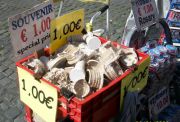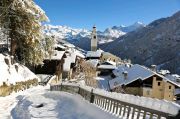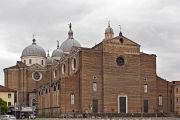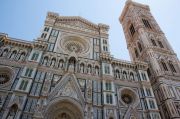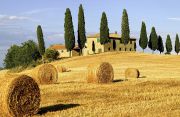Sights of Sardinia: Mediterranean magic
Sardinia, a magical island in the Mediterranean Sea between Sicily and Corsica, is literally full of interesting places. Mountain valleys with snow-white tops on the island, turquoise water on the beaches, prehistoric nuraghi, necropolises, amphitheatres, museums, thermal springs, romantic architecture... all of this is mixed with bright holidays and delicious local cuisine. In general, the sights of Sardinia will satisfy the desires of the most demanding tourists.
Historical sights of Sardinia
The history of Sardinia and its ancient tribes begins with the Neolithic period. No wonder that now the island has so many interesting and unusual sights.
Nuraghi
Let's start with the nuraghi – unique towers, about the purpose of which scientists argue until now. They were created by the ancient Nuragic civilization. These 10 – 20-meter structures are made of huge stones, without the use of gluing materials. The most intriguing thing is that the nuraghi do not have a foundation, and they stand only due to the mass and texture of the stones. The island has 7 – 8 thousand of these towers, but the most interesting is the Nuraghe Valley – the Su Nuraksy complex, not far from Barumini, which is a UNESCO World Heritage Site.
 Photo source: miel-zarubezh.ru.
Photo source: miel-zarubezh.ru.
Many other nuraghi can be found in the "Strongholds of Sardinia" section.
How to get there: if you do not have a car it's better to take a tour to Su Nuraksy. From Alghero the road by car will take about 3 hours. But there are other nuraghi, much closer to this city. For example, Santu Antine in the town of Torralba. Santu Antine is a three-story and three-tower "king" of nuraghi, as well as the remains of an ancient village and a museum.
Necropolis
Necropolises in Sardinia will also be interesting for the lovers of antiquity. For example, carved in the rock necropolis of Sant’Andrea Priu in Bonorva dating back to the 3500th century BC. In the Middle Ages, they served as a shelter for Christian monks. This is one of the largest tombs of the Mediterranean basin.
Also you may be interested in:
- Puttu Codinu necropolis in Villanova Monteleone commune,
- necropolis Su Crucifissu Mannu in the municipality of Porto Torres,
- necropolis Monte Siseri in the municipality of Putifigari,
- necropolis of Pedras Serradas in the municipality of Florinas.
The necropolis of Sant’Andrea Priu is situated in the Southern part of the Saint Lucia in the commune of Bonorva.
Tombs of the Giants
Do not forget to inspect the Tombs of the Giants – huge graves of 1,000 BC. There are about 300 of them on the whole island. The tombs have a specific architecture, thanks to which locals have given them their name. Some tombs are rather modest, others are more impressive. Many guides recommend visiting:
- the tomb of giants Barrancu Mannu in the municipality of Santadi,
- the tomb of the giants Sa Domu e S'orcu in the commune of Siddi,
- the tomb of the giants S'Ena'e Thomes near the town of Dorgali.
 Photo source: guides.tonkosti.ru.
Photo source: guides.tonkosti.ru.
The Nora Ruins
And, of course, the ruins of the ancient city of Nora, the first city of Sardinia (not far from Pula), now half submerged in the domain of Neptune. This settlement, founded by the Phoenicians, will allow you to fully plunge into the past. The roads laid out by the stone, the ruins of houses, mosaics, columns and stelae, the remains of the theater, fountains and pools. Welcome to history!
How to get there: the Nora ruins are almost at the extreme Southern point of Sardinia. The nearest big city is Cagliari. From there, ARST buses run to the town of Pula. There is also a stop in the port of Cagliari. Arriving in Pula, you will need to walk 30 minutes to the ruins, although you can take a special bus.
Sights of Cagliari – the capital
Having given due to the very old gray antiquity, we will move to the modern life of the paradise island.
First we will visit the current capital of our hero – Cagliari. This not a very large city (population reaches less than 200 thousand people) and it is able to occupy the tourist for more than one day.
 Photo source: selfguide.ru.
Photo source: selfguide.ru.
The main part of Cagliari's attractions is, quite logically, in the old town:
- A well-preserved ancient Roman amphitheater, about 2 thousand years old.
- Medieval fortress of San Michele. Imagine – a hill covered by a cozy park, a narrow path, and suddenly – above you hangs a gloomy citadel, suspiciously meeting the newcomer with an ancient stone wall. Despite the unfriendly appearance, now the fortress serves as a home to cheerful mimes and troubadours – this is the city center of culture and arts Castello di San Michele.
- Santa Maria Cathedral, hovering over the central Royal Square. It was reconstructed according to the oldest drawings, therefore today it is one of the most authentic churches in Italy. By the way, the thorns of the thorn crown of Jesus Christ are kept here.
- Also, do not forget to visit one of the city's favorite places of interest – the bastion of Saint Remy, named after the Viceroy, Baron of Saint Remy. Above the bastion you can see almost the entire lower part of Cagliari.
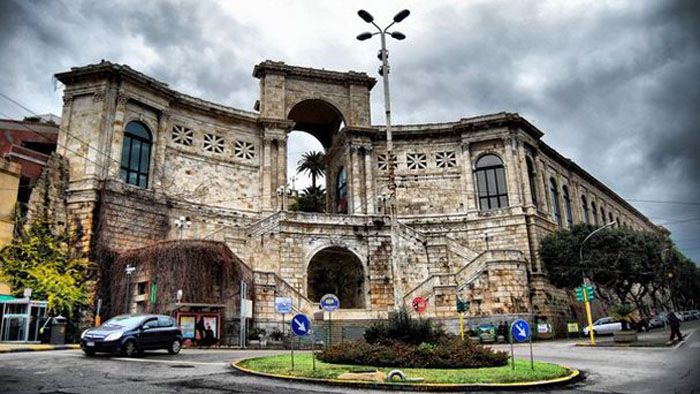 Photo source: openarium.ru.
Photo source: openarium.ru.
- The National Archaeological Museum of Cagliari is the largest house of the muses on the island.
- Botanical Garden, where you will find more than 2 thousand species of diverse flora from all over the world.
- And, of course, the eight-kilometer Poetto beach, one of the most charming holiday destinations in Sardinia.
The choice of hotels in Cagliari is as varied as the sights.
Cities of Sardinia and their attractions
The capital of Sardinia, Cagliari is not the only settlement that can please a tourist.
Olbia
Let us speak about port Olbia, which until the 20th century bore the name of Terranova Pausania. Here you will see:
- Piazza Regina Margherita, surrounded by the spirit of the Middle Ages.
- Basilica of San Simplicio (named after the city's first bishop) built, among other things, at the site of an ancient cemetery.
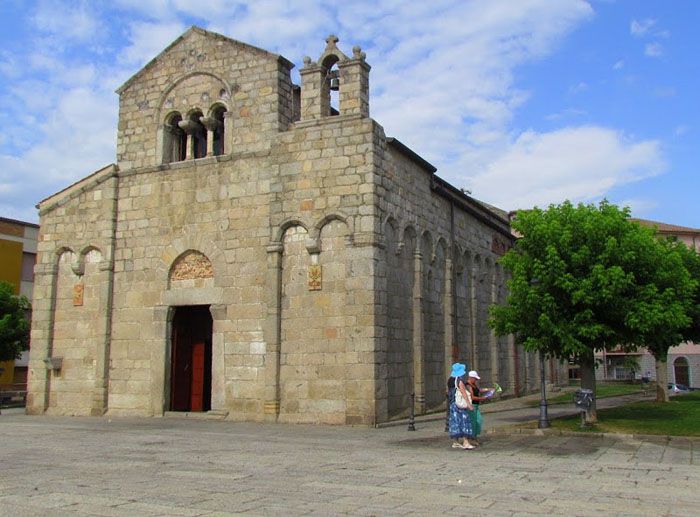 Photo source: isrageo.wordpress.com
Photo source: isrageo.wordpress.com
- Small but glorious because of its frescoes and a dome decorated with multi-colored ceramic tiles, the church of San Paolo was built at the place of the pagan sanctuary.
- The National Archaeological Museum of Olbia, situated on a separate island, is interesting not only because of the unconventional exposition, including Roman ships, but also because of its architectural appearance.
- The largest park in Sardinia, Fausto Noce (more than 15 hectares).
- The famous Emerald Coast is situated not far from Italy, and it is the inimitable Costa Smeralda, a long 55-kilometer coastline with small coves and comfortable beaches.
By the way, while choosing which of Olbia's attractions to visit, take care of a place to stay in this beautiful city.
Sassari
Sassari is literally filled with temples and churches, the most prominent of which are:
- Church of the Santa Maria of Bethlehem, created with clear oriental motifs,
- Gothic-baroque cathedral of St. Nicholas the Wonderworker.
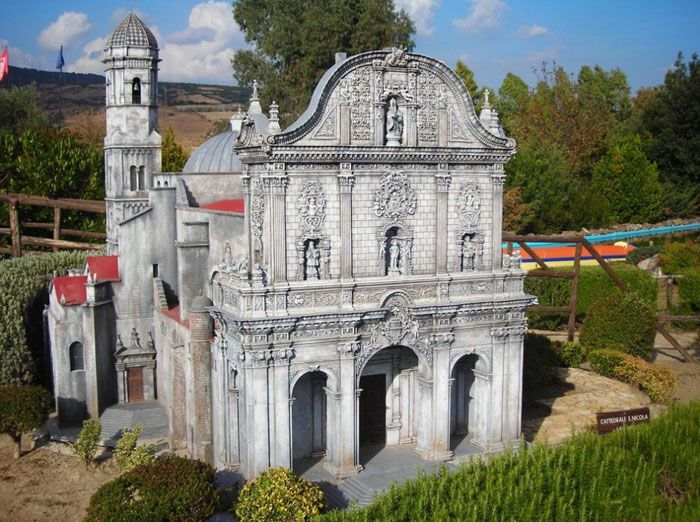 Photo source: tourister.ru.
Photo source: tourister.ru.
Among the attractions of Sassari there is the National Museum of Sanna with a chic collection of items from the Nuragic era. And also a bunch of palaces and the oldest university in Sardinia.
Hotels in Sassari will greet you with their hospitality and coziness.
Castelsardo
Do not miss the medieval town of Castelsardo, located in 25 km from Sassari.
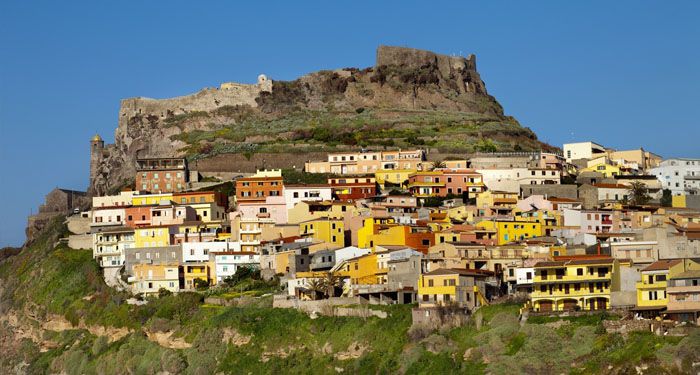 Photo source: wonderfulsardinia.com.
Photo source: wonderfulsardinia.com.
You will hardly find such concentration of memorials and buildings of the Dark Ages era in a much larger and more popular settlements. And of course, Capo Caccia, 45 km away, with its lighthouse, looking proudly at mortals almost from heaven (186 meters above the sea level), and visible from a distance of more than 30 miles. Today, the entire coastal territory of the cape has become a marine reserve.
 Photo by Gianni Careddu, wikimedia.org.
Photo by Gianni Careddu, wikimedia.org.
Nuoro
We cannot fail to mention Nuoro and its attractions:
- Central square – Piazza Sebastiano Satta.
- Interesting museums, among which the Museum of Life and Folk Traditions.
- Elegant temples, for example, the Cathedral of Santa Maria della Neve.
- And, of course, Mount Ortobene with a seven-meter statue of Jesus Christ (seven kilometers from Nuoro), people say that it has healing effects. The figure of the Lord (that weighs 2 tons) created by Vincenzo Jerace in 1901 on the initiative of Pope Leo XIII, within the framework of the celebration of the 19th centuries of the existence of Christianity.
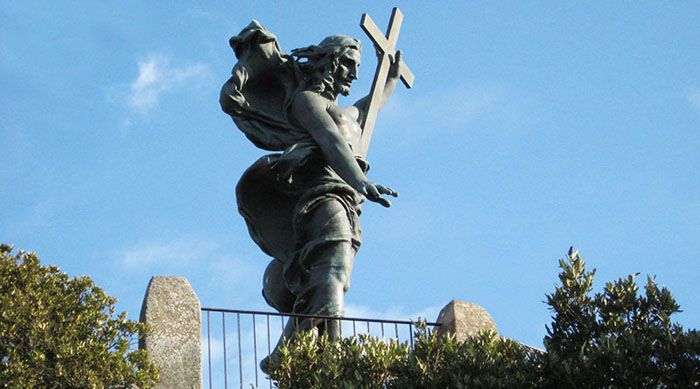 Photo source: selfguide.ru.
Photo source: selfguide.ru.
Oristano
Oristano is a city located "between the sea and ponds", famous for:
- Park Giardini Pubblici, where you can enjoy magnificent views of the surrounding area.
- The squares, in particular the central Piazza Roma situated in the heart of Oristano. And the park of Eleanor of Arborea, who ruled the city in the 14th century, with a monument to her beloved ruler in the center.
 Photo source: italia-ru.com.
Photo source: italia-ru.com.
- 28-meter tower of St. Christopher that dates back to the 13th century, the last reminder of the once mighty medieval fortifications of Oristano.
- The Cathedral of Santa Maria Assunta, the largest temple of the island, dedicated to the Ascension of the Blessed Virgin Mary.
Do not forget to visit the settlements near the city, in particular Cabras, with the fort San Giovanni di Sinis, and the remnants of the Phoenician city of Tarros.
Or... Yes, virtually every second settlement in Sardinia, or even every first, can make you forget about everything in the world, even for few days.
By the way, hotels in Oristano can be found here.
Natural Sights of Sardinia
Now let's talk about the miraculous charms of magical Sardinia. They, as you can guess, are also in abundance.
Neptune's Grotto
The grotto of Neptune is the second gem of the already familiar to us Capo Caccia. The most famous cave of the island, according to legend, became a grave for fishermen, who were looking for treasures here. The jealous lord of the seas did not release the ill-fated treasure hunters from the grotto, at the same time once again glorifying his name in the centuries (indeed, we will not call such beauty a grotto of the untimely dead fishermen).
You can get here in two ways. Free of fee but slow – through the 659 steps of stairs. Fast but for the money – by the sea for 15 euros.
 Photo source: miel-zarubezh.ru.
Photo source: miel-zarubezh.ru.
But no matter how you get here – it is worth it. Charming stalagmites. 9-meter underground salt lake – Lago Lamarmora. And even the underwater Nereo cave, the largest in the Mediterranean, dedicated to Nereus, the father of marine nymphs. Half a dozen rooms, among which is one with an 18-meter column. 2.5 kilometers of underground beauty. However, not all are open to visiting.
Cape Capo Testa (North of Sardinia) and the Moon Valley
Capo Testa is one of the few remaining corners of the planet’s untouched nature. Seven bays, surrounded by granite rocks, taking the form of a variety of fantastic (and not very) creatures (the wind and rain made sure of it). An out-of-this-world sight.
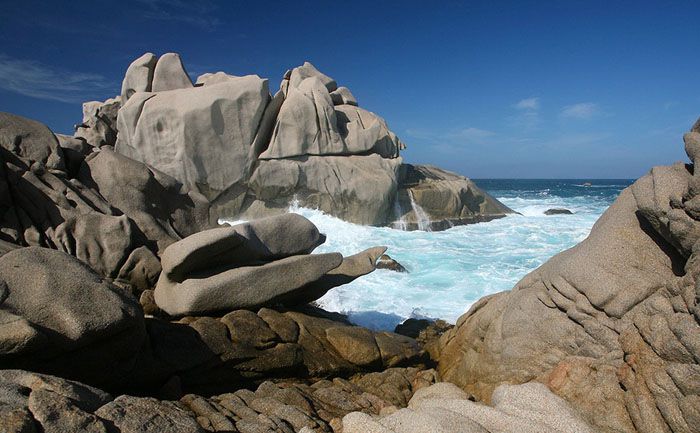 Photo source: miel-zarubezh.ru.
Photo source: miel-zarubezh.ru.
National park "Archipelago di La Maddalena", consisting of 62 charming islands
"Archipelago di La Maddalena" is the first nature reserve created in Sardinia (ferry goes here from Palau) – the promised land for wildlife fans. In particular, it is possible to see the inhabitants of the international whale reserve. It is one of the most interesting places among the natural attractions of Sardinia.
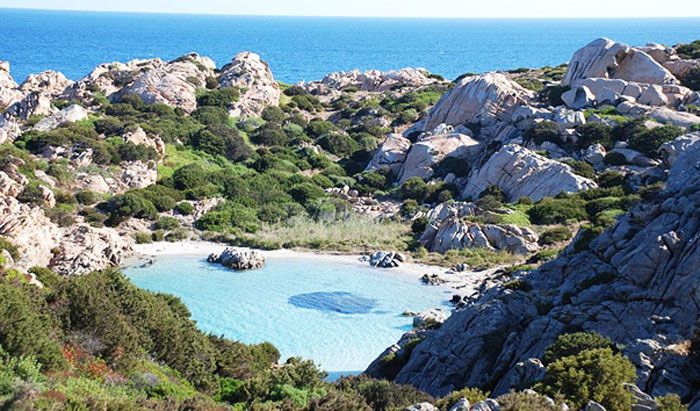 Photo source: rutraveller.ru.
Photo source: rutraveller.ru.
Parco Naturale Molentargius
Parco Naturale Molentargius is a nature reserve with a territory of more than one and a half thousand hectares, where a lot of rare animals live, especially birds, in particular representatives of the "red folk" – magical pink flamingos.
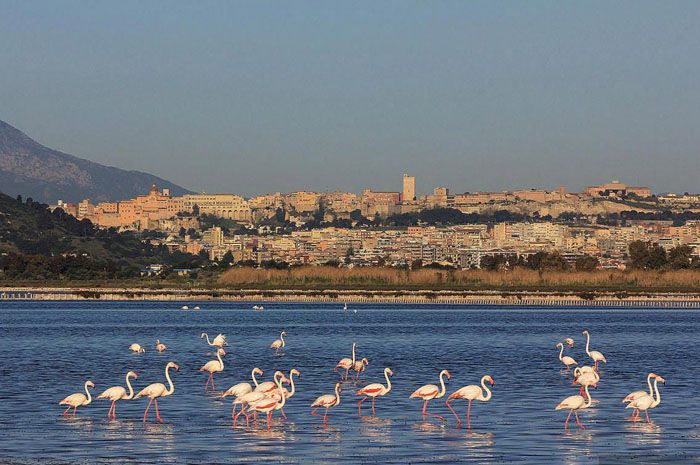 Photo source: otzyv.ru.
Photo source: otzyv.ru.
Another "bird's paradise" of the protected lagoon-lake Cabras with an area of 2200 hectares and Sale Porcus.
Montiferru Forests
The green forests of Montiferru (nearby Oristano) are one of the oldest in Europe, overflowing with everlasting trees and legends. It is not recommended to wander alone here, it is better to use the services of a guide. Because you never know what might happen.
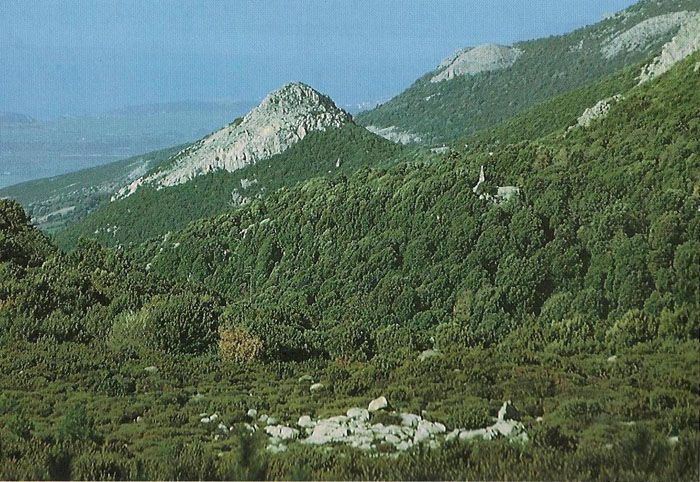 Photo source: it.wikipedia.org.
Photo source: it.wikipedia.org.
Parco Nazionale dell'Asinara
The Asinara National Park includes the island of Asinara itself and the coastal waters. It is rich in Mediterranean flora (678 species), mostly shrubs, and the fauna does not disappoint – more than 80 species of wild animals. And, undoubtedly, the one species that gave the name to the island ("asino" from Italian translates as "donkey").
 Photo source: eco-turizm.net.
Photo source: eco-turizm.net.
And, of course, the beaches of Sardinia, because of which the island is famous, along with its architectural or other natural wonders. They need a separate, detailed article.
Some sources call the whole Sardinia one great attraction. And the more I read about this Mediterranean island, the more I am convinced that they are probably right.




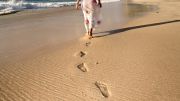
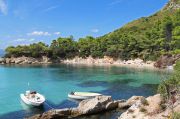

.jpg)
